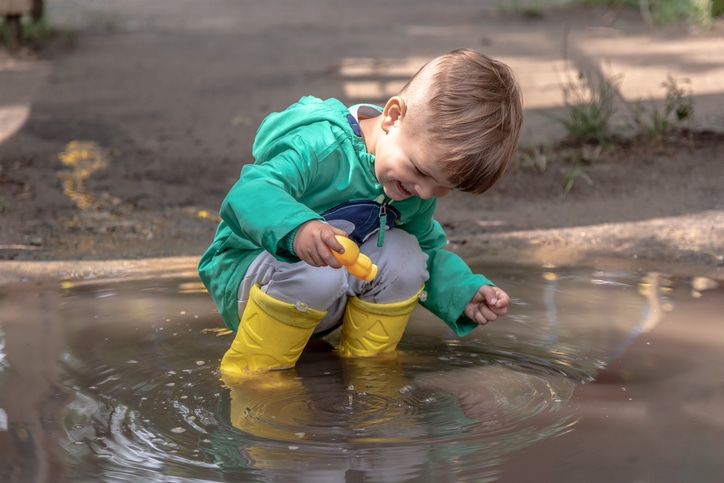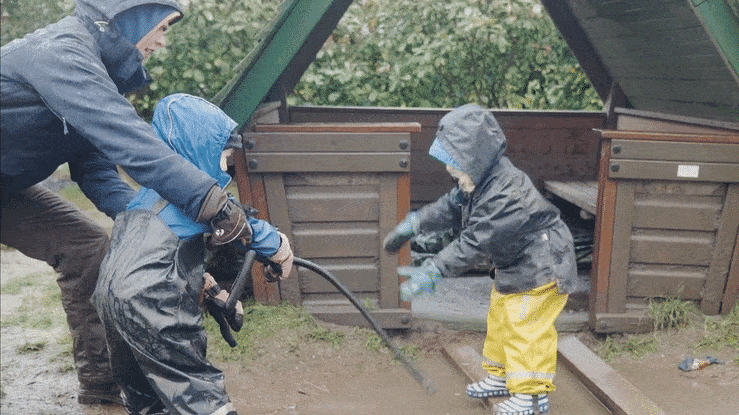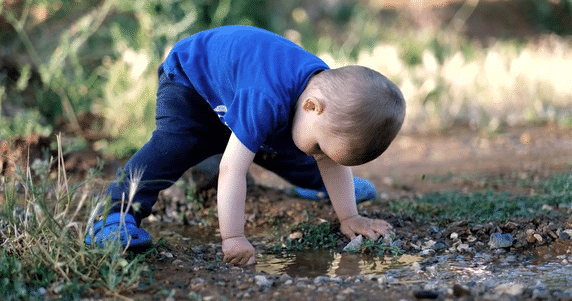In the clip ‘the rescue’, you can see how the pool of water left by the rain can be used as a natural stimulus for games. As the children use the planks to position themselves steadily in the puddle, they are stimulating their vestibular sense and learning that ‘when I shuffle or place one foot in front of the other, I can stay upright and, on the plank,’. Their bodies are sending this sensory information to their brains to enable them to make the connection that I need to move slowly and controlled to stay balanced on narrow objects, and if I wobble, I get a tightening feeling in my tummy as my muscles tense; interoception. Later in the clip, you see the practitioner carefully model how heavy work of pulling another using the flexi tube requires greater skill of hand-eye coordination, balance and strength. This is an example of proprioception – I don’t need to look at my feet to stay balanced as I reach out and try to grab the flexi tube.
Teaching meteorology in early years
Children often experiment with their own part in the weather world like playing in and with muddy puddles. Your role as early years practitioners is to help children make sense of what they experience, and one less exploited scientific concept in my view is introducing basic meteorology and human relationship with the weather.
Learning about the weather occurs in many ways in early childhood education settings. It offers a great opportunity to make weather connections and awaken scientific curiosity. However, most young children believe that rain is water and comes from the sky than clouds. Your opportunity is to help children make the accurate association to clouds by sharing knowledge when observing weather changes, reaching basic conclusions and predicting based on these observations – from outdoors, not through a window or a weather app. Seeing vividly the depth and colour tone changes, commenting on the expanding cloud shapes over time and the sensations of the breeze and sudden whirring and scuttling noises amongst the leaves and branches.
You can move beyond thinking about the weather as context to a particular experience such as ‘it’s raining today’. An alternative as Rooney (2016) states is to consider the ways the weather moves in, with or through us and where we move in, with or through a flux of elemental forces.





